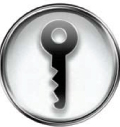
Get in Control
Key systems management keeps the unexpected at arm’s length
- By Lee Garver
- Aug 01, 2010
Losing control is never a good thing, especially when it comes to a building’s
key system. Unfortunately, this is exactly what happens when facilities are
lax in their key control policies and wait too long to re-establish order.
When this occurs, the secure, tightly managed key system that once existed is
replaced by a porous line of defense with no accountability and increased exposure
to security threats. Facility managers can avoid this scenario by seeking the assistance
of a certified key systems professional.
Avoiding System Decay
Time seems to be the greatest adversary to a key system. Many end users are in
possession of legacy key systems that were set up years ago. Over time, these systems
become harder to maintain as the number of keys that are lost, stolen or
unaccounted for increase to an unsustainable level.
End users who are unsure of the status of their key systems can get a good idea
of their viability by pondering the following questions:
Is the key system more than 10 years old? If so, there’s a good chance a number
of keys are missing.
Has the facility security objectives changed recently? If so, was the key system
updated to reflect these changes?
Is the key system audited on a yearly basis? If not, there is no way of knowing
if control has been maintained.
Many end users who set out to answer these questions will be shocked when
they realize the number of security vulnerabilities that exist within their facility.
When this happens, it is time to call in a certified professional who has the tools
and expertise to address the needs of end users in any market.
The certification process requires many hours of studying and testing to ensure
proficiency in all aspects of key systems. A certified professional will know about
special requirements that are mandated by specific facility types. The key system
for a healthcare facility, for example, must abide by Health Insurance Portability
and Accountability Act regulations, while an airport must be in compliance
with Transportation Security Administration guidelines. A certified professional
will know the ins and outs of industry regulations and create a key system in
accordance with the laws that a facility must comply with.
In addition to being knowledgeable in their field, one desired benefit makes the
services of a certified key systems stand out: accountability. The certified professional
will guarantee the viability of the key system. Few non-certified individuals
will offer this level of assurance.
Establishing Control
In this age of high-tech devices, a mechanical lock and key system remains the
simplest form of access control. It also is an essential element of facility security,
like a load-bearing pillar that supports the rest of the structure. Damage this pillar
and the rest of the building—or security system—is left unstable. This most basic
security measure also is highly dependable, but requires meticulous recordkeeping
to track all keys. A certified professional will develop a database that allows facilities
to simplify their recordkeeping.
If a key is lost or stolen, it is necessary to look back in the records and determine
which locks are accessible with the missing key. The cylinders on those locks
would then be replaced, and new keys would have to be issued.
Key duplication is another concern, but it can be easily rectified by selecting
a patented high-security key system that offers factory protection of key blanks.
This means the manufacturer of the key system will not distribute key blanks without
written permission from authorized facility staff.
Having a patent on a key system gives the manufacturer exclusive rights to produce
and sell the keys. A non-patented key, commonly used in residential settings,
can be purchased and duplicated without consent of the key manufacturer. That
is why it is possible for a homeowner to duplicate their house key at a hardware
store. This is impossible with a patented key because the store will not have the
key blanks.
A certified professional can recommend a manufacturer that places strict limits
on distribution of key blanks and add features that make duplication more
of a challenge.
This practice of limiting key distribution and duplication, known as key control,
is critical to the effectiveness of the key system. This simple and effective
precaution reduces the risk of tampering by limiting and tracking the distribution
of keys.
Key systems also can be used in conjunction with more evolved access control
products, with the high-tech systems protecting sensitive areas and the standard
cylinders securing common spaces. The combination offers high security at a lower
cost. Even if electronic hardware is used, a master key override is employed on
most locking systems.
A professional also will be able to recommend the appropriate level of control
needed for each facility, from limited control for low-security-risk areas to absolute
control for the highest level of protection. A certified professional also can
educate the end user on how to maintain their new key system.
The old-fashioned key system devised more than 160 years ago is still in place
because of one simple reason: it works. The pin and tumbler cylinder was designed
to prevent unauthorized entry, and it does this well. When protected by strict key
control, the lock delivers even greater reliability. Given its successful track record,
key systems will likely be in use for generations to come.
End users need to make sure they are in control of their key system and not
exposed to risk. For those who have lost or are in danger of losing
control, it is time to call for certified help.
This article originally appeared in the issue of .
About the Author
Lee Garver is the business development manager of key systems at ASSA ABLOY Door Security Solutions.